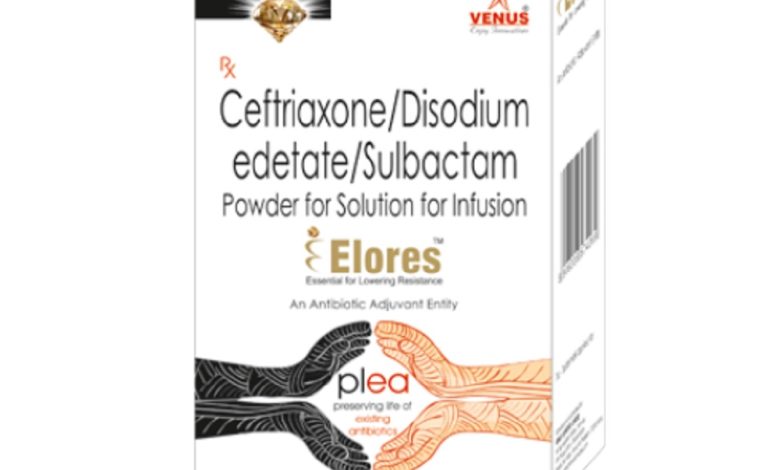Venus Remedies launches flagship R&D drug Elores in Oman

The company is targeting the $237-million antibiotic market in the GCC region, out of which 35 per cent accounts for ESBL and MBL resistance segment, to which Elores caters
Venus Remedies has launched its flagship R&D drug, Elores, in the $1.4-billion pharmaceutical market in Oman.
Clinically proven to be one of the best drugs against ICU infections caused by multidrug-resistant extended spectrum beta lactamase (ESBL) and metallo beta lactamase (MBL)-producing gram-negative bacteria, Elores is effective against bacterial strains resistant to the last-resort carbapenem class of antibiotics. An outcome of more than 15 years of in-house R&D, Elores is Venus Remedies’ answer to the global health threat posed by antimicrobial resistance. Its clinical trial study, completed to very high standards, was the first antibiotic study from India to get listed on the US clinical trial web portal.
The Oman antibiotics market is primarily dependent on imports from India. Oman imported antibiotics worth $6.8 million in 2021. The launch of Elores in Oman is expected to open the doors for the entry of the novel antibiotic adjuvant entity in other important Gulf Cooperation Council (GCC) member countries as well.
“We expect this product, which has been patented in 46 countries, including the largest pharmaceutical markets of the US and Japan and many European countries, to generate a revenue of around $0.5 million by 2025. With Elores launched in Oman, we are now targeting the $237-million antibiotic market in the GCC region, out of which 54 per cent accounts for ESBL and MBL resistance segment. We are aiming to secure a 0.1 per cent share in this segment, which amounts to $0.23 million,” said Aditi K Chaudhary, President, International Business, Venus Remedies.
While Venus Remedies had out-licensed Elores to Indian drug major Cipla in the domestic market in 2020, the worldwide marketing rights for Elores are still vested in the company, which has launched the product in eight countries so far, including Colombia, Dominican Republic, Ethiopia, Guatemala, Myanmar, Oman, Saudi Arabia and Tanzania. It is awaiting marketing authorisation for the drug from another 16 countries.
“As we chart the way forward for Elores, our eyes are set on new horizons, including the promising markets of Kenya, Philippines, Kuwait and Qatar. Our vision transcends mere expansion. We seek collaboration with multinational corporations, which resonate with our mission and possess the marketing prowess to amplify the impact of Elores in specified territories. In a world where regulatory agencies are accelerating the approval process for antibiotics, we stand on the cusp of a new era. With Elores, we are not just expecting more marketing approvals in coming months; we are anticipating a transformative shift in the global fight against antibiotic resistance,” said Aditi K Chaudhary.
Globally, the systemic antibacterial market, which is growing at a compounded annual growth rate of 4.26 per cent, is set to reach $60 billion by the year 2030. Elores is capable of fighting multidrug-resistant ESBL/MBL-producing gram-negative infections, which comprise 24 per cent of this market.
While currently available ICU drugs are rapidly developing resistance, clinical studies of Elores on more than 1,000 patients have shown that it has resulted in more than 30 per cent reduction in treatment time and about 50 per cent reduction in the cost of treatment.
Elores has been recognised as the best innovation by a team of experts from Stanford Business School, US, IC2 Institute at University of Texas, Austin, US and Lockheed Martin Foundation in collaboration with the Union Department of Science and Technology under the Indo-US joint science and technology innovation programme. It has also been selected among the top eight technologies to be commercialised in the US.
Elores comprises a third-generation cephalosporin, a beta lactamase inhibitor and a non-antibiotic adjuvant, disodium edetate, for intravenous administration. It contains the spread of resistance by countering the cell impermeability mechanism of multi-drug resistant bacterial strains, breaking bacterial biofilms and preventing the transfer of resistant plasmids.




